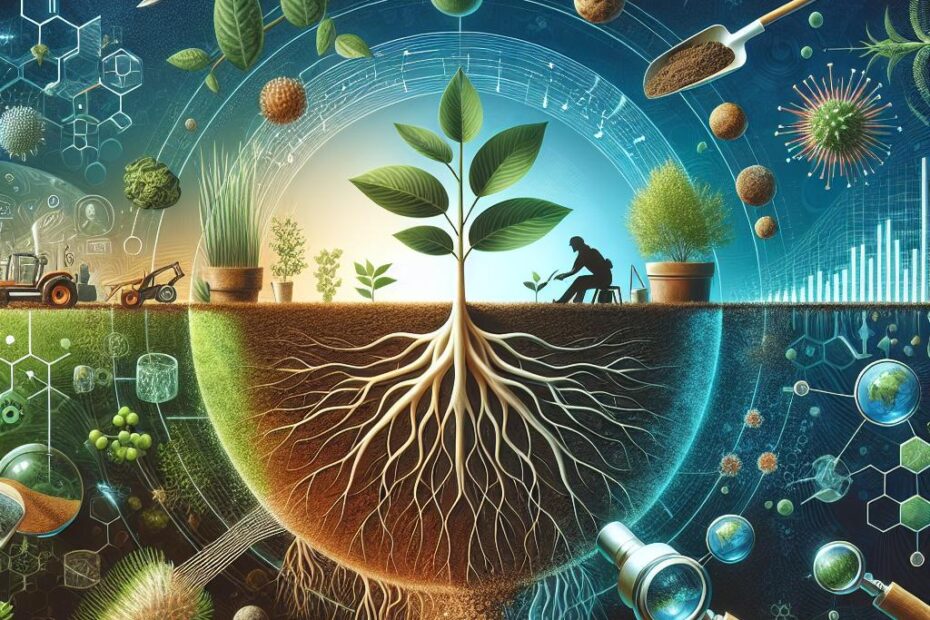Improving Drainage in Soil: How to Prevent Waterlogging and Enhance Plant Growth
Introduction
Proper drainage is crucial for healthy plant growth as it helps prevent waterlogging, which can lead to root rot and other issues. In this article, we will explore effective ways to improve drainage in soil, ensuring that your plants thrive in ideal conditions. By following these tips, you can create a well-drained environment that promotes optimal plant growth and prevents water-related problems.
Benefits of Good Drainage in Soil
-
Prevents waterlogging: Excess water in the soil can suffocate plant roots, leading to reduced nutrient uptake and stunted growth. Proper drainage helps prevent waterlogging, allowing roots to access oxygen and nutrients more efficiently.
-
Reduces erosion: Poor drainage can result in soil erosion, which can lead to loss of nutrients and destabilization of the soil structure. By improving drainage, you can prevent erosion and maintain healthy soil for plant growth.
-
Enhances nutrient uptake: Well-drained soil allows water to move freely through the root zone, carrying essential nutrients to plant roots. This promotes optimal nutrient uptake, leading to healthier and more vigorous plants.
Practical Tips for Improving Drainage in Soil
-
Choose the right soil type: Soil composition plays a significant role in drainage. Sandy soils drain quickly but may not retain enough moisture, while clay soils drain poorly but hold water too long. A loamy soil with a good balance of sand, silt, and clay particles is ideal for promoting both drainage and moisture retention.
-
Amend the soil with organic matter: Adding compost, peat moss, or well-rotted manure to the soil can improve its drainage properties. Organic matter helps loosen compacted soil, increase soil aggregation, and create channels for water to flow through.
-
Install a drainage system: In areas with poor natural drainage, you may need to install a drainage system to remove excess water effectively. French drains, gravel-filled trenches, or perforated pipes can help redirect water away from the root zone.
-
Raise planting beds: Raised beds can improve drainage by elevating plants above poorly drained soil. This allows water to drain more freely and prevents waterlogging around plant roots.
Case Study: Improving Drainage in a Vegetable Garden
Bob, a passionate gardener, noticed that his vegetable garden was prone to waterlogging after heavy rains, leading to poor crop yields. He decided to improve drainage by incorporating raised beds and adding organic matter to the soil. After implementing these changes, Bob observed a significant improvement in plant growth and overall health. His vegetables flourished, and he was able to harvest a bountiful crop thanks to the enhanced drainage in his garden.
First-hand Experience: A Gardener’s Perspective
As a seasoned gardener, I have encountered drainage issues in my own garden and learned the importance of proper soil drainage for plant health. By following the tips outlined in this article, I have successfully improved drainage in my garden beds and witnessed a noticeable improvement in plant growth. Healthy soil with good drainage is the foundation for thriving plants, and investing time and effort into enhancing drainage can yield impressive results.
Conclusion
Improving drainage in soil is essential for creating an optimal growing environment for plants. By selecting the right soil type, amending the soil with organic matter, installing a drainage system, and raising planting beds, you can effectively prevent waterlogging and promote healthy plant growth. Remember, good drainage is key to maintaining healthy soil and ensuring successful plant cultivation. By following the practical tips and techniques outlined in this article, you can create a well-drained garden that supports robust plant growth and vibrant blooms.
